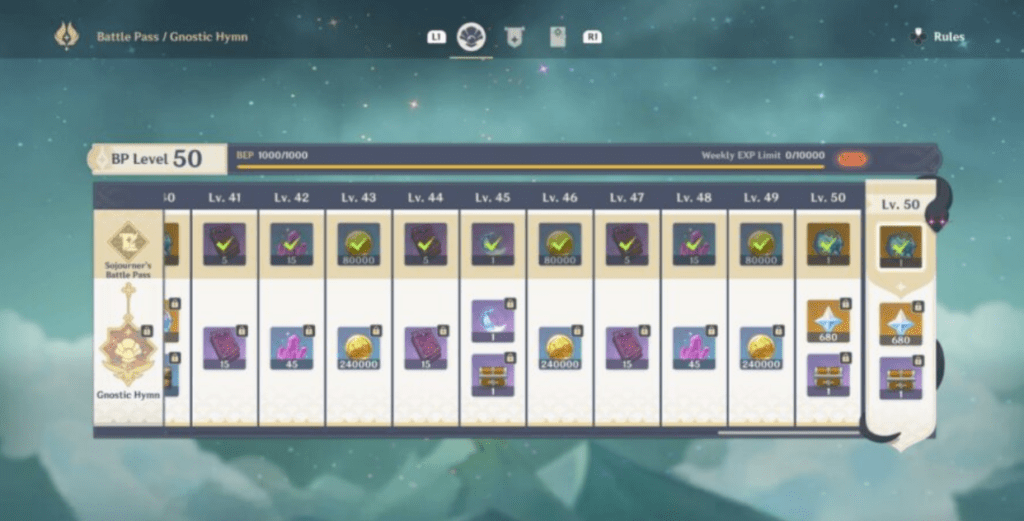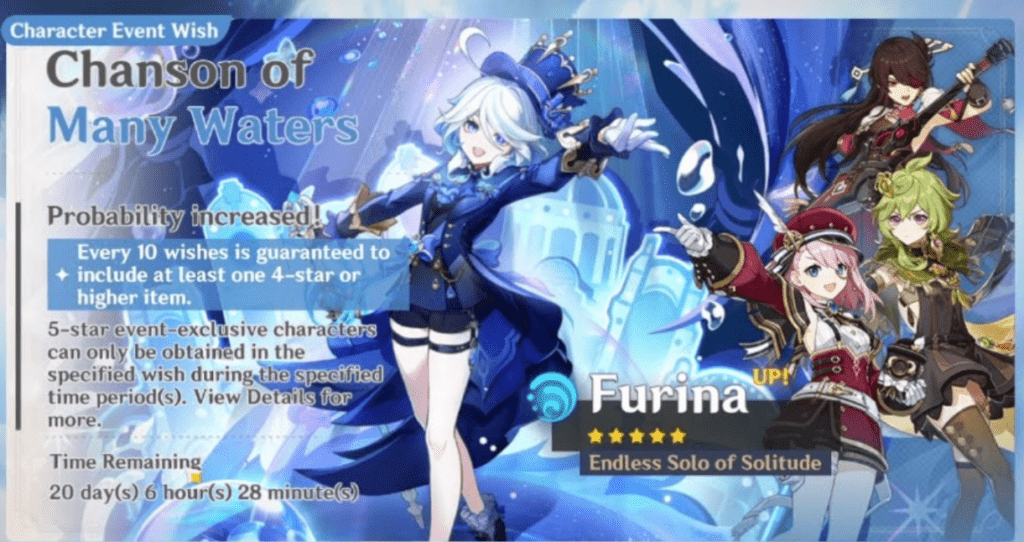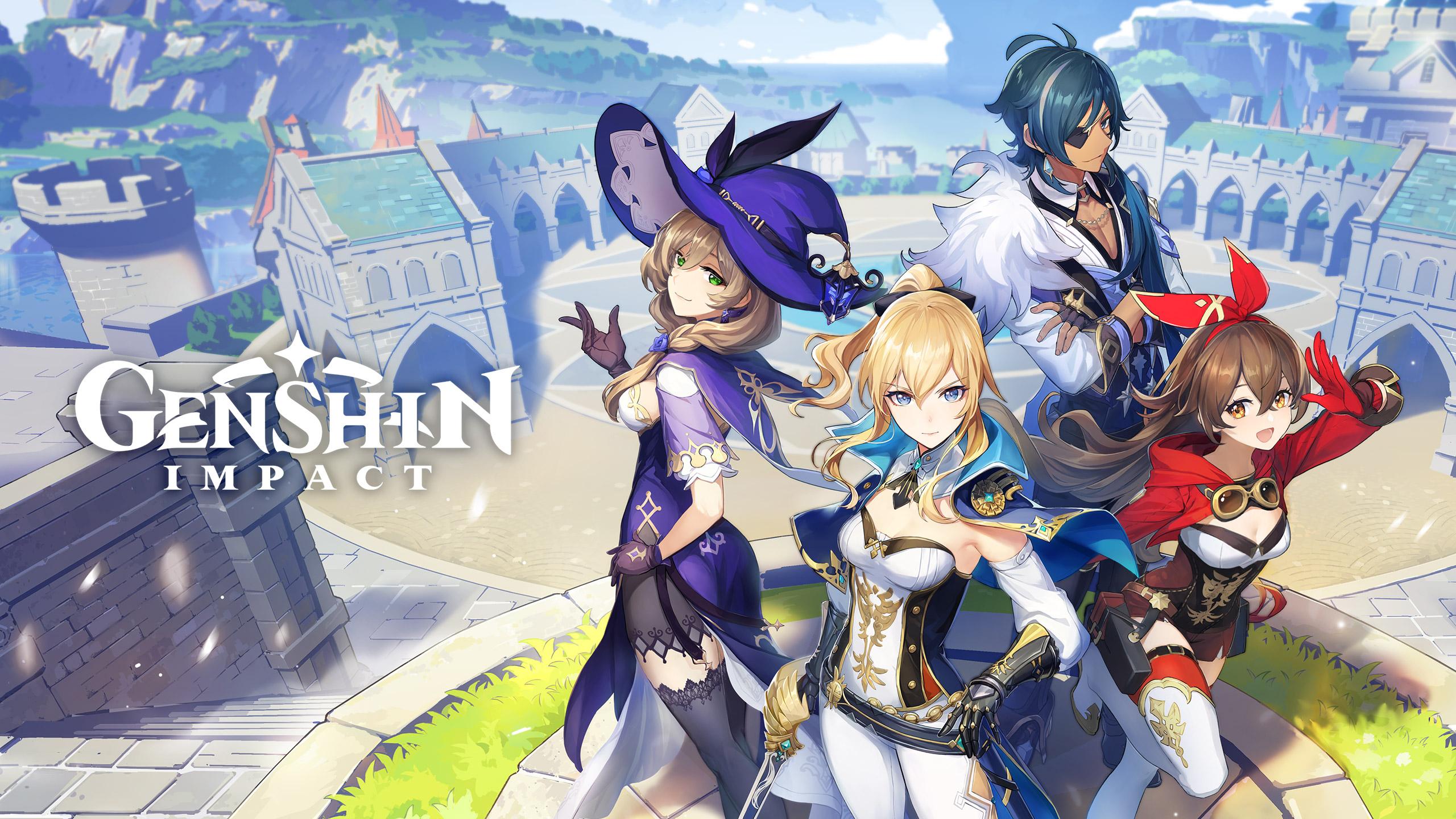Introduction
Genshin Impact is an action-adventure role-playing game that includes elements of chance. Gacha pulls (also called “wishes” in Genshin) are equal to one chance at getting the event reward (usually a highly ranked, limited-run character). Developed by HoYoverse, this game is available on many platforms including Android, iOS, PlayStation 4/5, and Windows (which I played it on). The game is free-to-play and includes micro-transactions, making it widely appealing to young children and adults. However, according to co-founder Liu Wei, the target paying audience is “otaku” players who will “pay for love” [1].
Central Argument
Genshin Impact puts players at risk for addiction by obscuring the cost of each pull and providing multiple avenues to obtain them. Unlike other games using chance or probability, Genshin incentivizes players to gamble by fostering emotional attachments through character lore. Although the game explicitly discloses the probability of receiving specific rewards, Genshin also includes a pity system that guarantees a better outcome to incentivize gambling tendencies.
Analysis
In Genshin Impact, players use Acquaint Fates for a standard banner including a base set of characters, and Intertwined Fates for event banners hosting the latest characters. Event banners for new characters are typically time-limited, putting pressure on players to buy the character immediately so they won’t miss out. Although each pull requires either an Acquaint Fate or an Intertwined Fate, players cannot directly purchase these items. Instead, they must first purchase Genesis Crystals, which can be converted into Primogems, which finally can be converted into Fate. This convoluted process disguises the true cost of each pull and can lead players to underestimate the total expense, increasing the risk of gambling addiction.

Genshin Impact provides multiple avenues to obtain pulls for the characters. First, players can obtain primogems through daily quests and logins. This incentivizes players to play the game daily, fostering addictive behaviors that can contribute to gambling. Additionally, players can gain pull materials using a multi-tiered battle pass. The free tier offers limited rewards, so players must use paid tiers to receive pulls. For instance, the $10 tier unlocks the premium currency (primogems) and 4 event banner pulls, and the $20 battle pass allows players to receive these rewards without going through the required actions and tasks of the lower tiers.

Finally, the main game includes quests that reward players with primogems upon completion. These quests reveal the game’s story, deepening players’ engagement and desire to keep playing.
Since the ideal outcome (obtaining a 5-star character or weapon) is worth no real-world currency, the game must motivate the players to spend their hard-earned cash through different means than traditional gambling. Genshin does this by introducing characters in quests before they become playable. The role-playing nature allows players to meet these characters in-game and form an attachment to them. Moreover, players can sample the characters through trial runs, which showcase the highest capability of the character in fun team combinations. Allowing players to experience the character’s abilities and imagine having them on their team makes players more likely to spend money.
As a game developed in China, Genshin Impact is legally required to disclose the probabilities of getting specific rewards (unlike in the US). Therefore, on each banner (like the one below), users can navigate to a relatively hidden but detailed description of reward probabilities. However, this doesn’t deter gambling. As mentioned in Addiction by Design: Machine Gambling in Las Vegas, “gambling addicts are well aware that they are beyond reason in the zone, and that knowledge of the machines’ inner functions will do little to curb their drive” [2].
For the non-gambling addicts, the pity system further encourages gambling behavior. This system increases the chance of receiving rewards the more players spend. For instance, players are guaranteed a fifty-fifty chance of receiving an event character after 90 pulls. If they lose this pull, the player is guaranteed to receive the event character after 180 pulls. With this guarantee, players can save primogems to guarantee their most-wanted characters, which often means players spend more time (and money) playing the game.

Conclusion
At first glance, Genshin Impact doesn’t seem to rely on chance with its strong world-building and traditional adventure RPG mechanics. However, these elements subtly encourage players to gamble for characters that improve their game experience. The game’s free-to-play model lowers the entry barrier, drawing in millions of players worldwide. However, the game’s financial success hinges not on every player spending money, but on a small subset of dedicated players who invest significant amounts of money in pursuit of their favorite characters.
Overall, this blend of gameplay and gambling elements broadens Genshin’s appeal and ensures profitability by capitalizing on the spending habits of a dedicated minority of players.
Citations
[1] https://kotaku.com/genshin-impact-whales-hoyoverse-gacha-gambling-spending-1849734889
[2] Addiction by Design: Machine Gambling in Las Vegas




